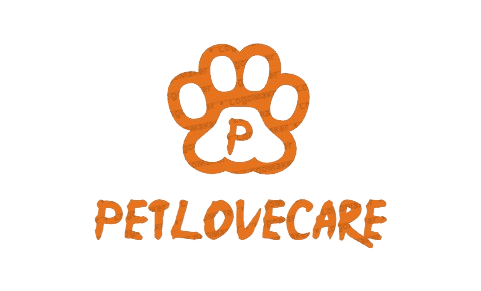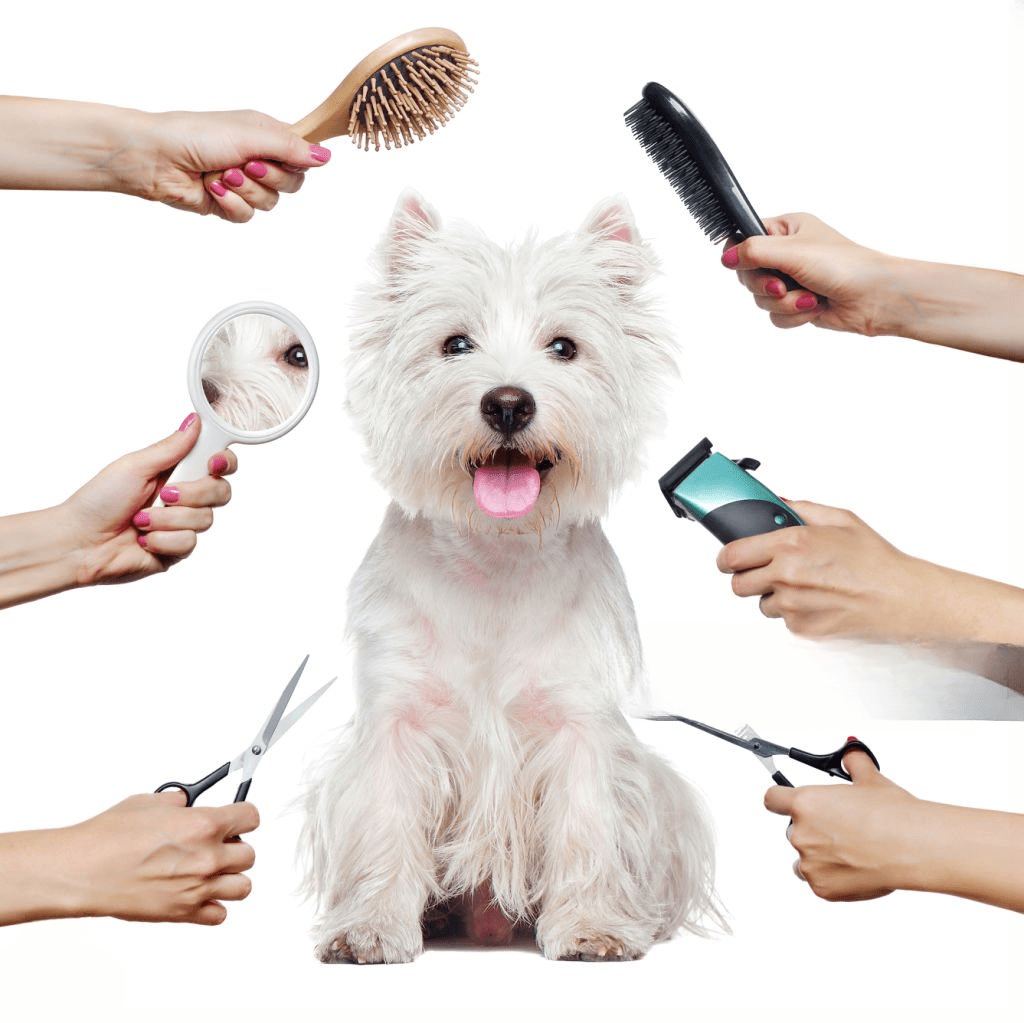In the world of dogs, groom is a fascinating behavior with several uses.
Now let’s examine the causes of dogs grooming:-
1. Social Bonding and Affection:-
o One way that dogs groom fosters social bonding and fortifies dog relationships is through grooming. Grooming between dogs is similar to giving one another a warm embrace or a firm handshake.
o It’s a means of expressing love and preserving social ties within the pack.
2. Hygiene and Stress Reduction:-
o Dogs groom one another to ease tension and anxiety. Dogs find comfort in physical contact, just like people do.
o They also contribute to the cleanliness and well-being of their fellow dogs by grooming and licking. By doing this, they clean their fur of dirt, debris, and parasites.
3. Natural Oil Distribution:-
o Dogs that lick each other’s fur share the natural oils that their skin produces. These oils keep the coat hydrated and glossy.
o It keeps their fur in prime condition, much like a spa treatment for dogs groom.
4. Establishing Rank and Dominance:-
o Within a pack, grooming is essential to establishing dominance. Some dogs may start grooming sessions with the more dominant dogs.
o It’s an expression of “I respect you and I’m not here to hurt you.” They strengthen their position in the social order by grooming a dog that is higher up.
5. Puppyhood Behaviors Last:-
o It’s interesting to note that a lot of these grooming habits have their origins in puppyhood. Puppies lick adult dogs’ mouths to plead for food that has been regurgitated when they are young.
o Dogs that are older yet still exhibit puppy behaviors, such as “kissing” or licking each other’s mouths to bond.
The next time you witness dogs groom one another, keep in mind that it’s a lovely display of their social relationships and communication rather than just good hygiene!
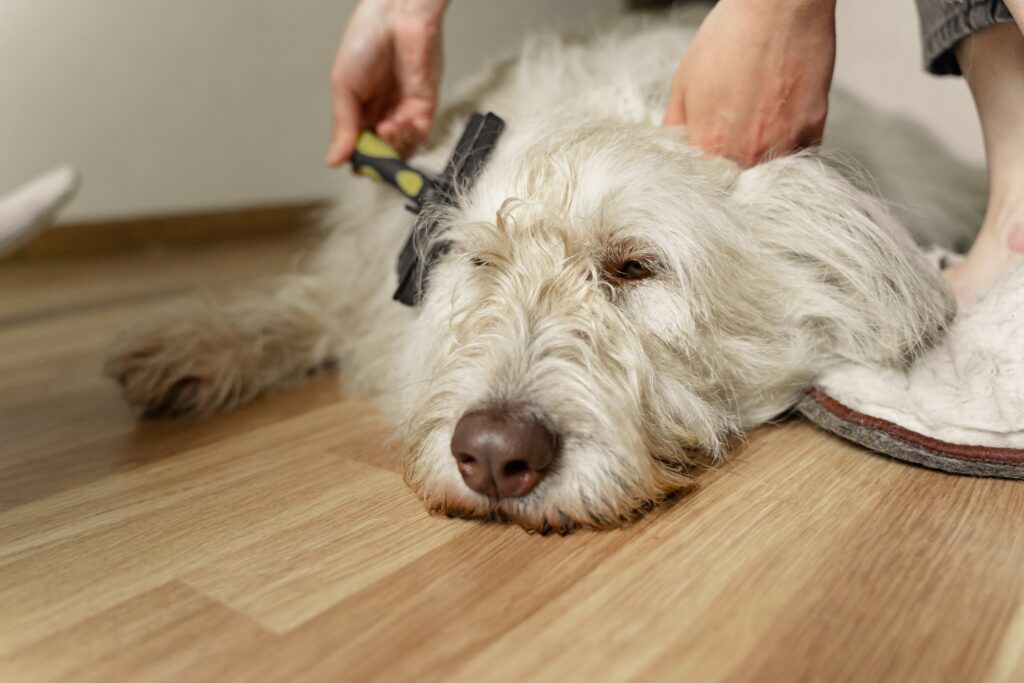

Do all dogs breeds groom each other?
Different dogs breeds have different grooming habits, and not all of them groom each other in tandem.
Let’s look into this more:-
1. Breeds That Frequently Take Care of One Another:– Some dog breeds are highly inclined to groom other dogs. These breeds like keeping each other clean and frequently develop strong bonds:
Afghan Hound:- When interacting with friends and family, Afghan Hounds are alive and silly, but they can be a little aloof towards strangers. They have a strong bond and love to be close to their owners at all times.
Puli:- The plural of Puli, Pulik, also grooms each other. With their characteristic corded coats, these Hungarian herding dogs are excellent companions.
2. Breeds That Need Regular Grooming:-
o Due to the types of coats they have, some breeds require regular grooming.
This highlights their grooming needs, though it doesn’t necessarily mean they groom each other:-
Poodle:- Poodles are lively, friendly, and intelligent dogs. Standard, miniature, and toy varieties are available. They may require expert grooming, but they are fulfilling friends.
Bichon Frise:- These enthusiastic canines relish spending time with their loved ones. Families with kids will love them as companions because of their playfulness and enthusiasm.
Portuguese Water Dog:- Despite having fur, these intelligent and active dogs need frequent brushing, washing, and trimming of their hair. They are relatively hypoallergenic and shed very little.
3. Breeds Requiring Little Maintenance:-
Conversely, some breeds require less upkeep in terms of grooming:-
o Boxer, Weimaraner, and Beagle allow for greater grooming flexibility.
If you’d rather a breed that requires less upkeep, think about looking into these choices.
Though not every breed exhibits the same grooming behavior, it’s still fascinating to see how dogs interact and take care of one another!
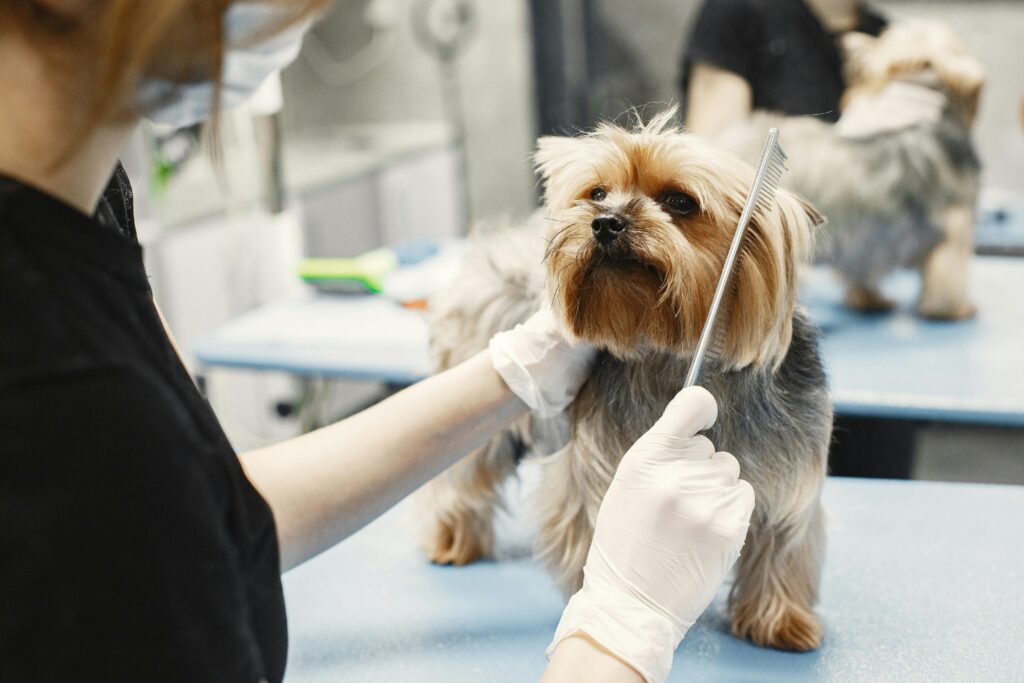

How often should I groom my dog?
For your dog’s general health and wellbeing, regular grooming is crucial. The type, length, and texture of your dog’s coat determine how frequently it needs to be groomed.
Let’s dissect it:-
1. Dogs with Short Hair:-
o Dogs with short hair require less maintenance. Regular brushing distributes natural oils and removes debris, keeping their coat and skin healthy.
o When they shed, which can occur at any time of year, use a curry-style brush. To avoid causing skin irritation, brush your short-haired dog at least every other day if they have an undercoat.
o Bathing dogs every four to six weeks is beneficial for those with oilier skin types.
2. Long-Haired Dogs:-
o Dogs with longer hair need more care and groom. It is essential to brush every day to avoid matting and tangles near the skin.
o Use a greyhound comb to gently untangle any knots. Undetected tangles can become painful mats.
o Every four to six weeks, long-haired dogs require a bath, and every eight to twelve weeks, they also require a haircut. Frequent brushing at home prolongs the intervals between visits to a professional groomer.
3. General Guidelines:-
1. Long-haired dogs require daily brushing, and twice a day if you wish to keep their coat longer.
2. Think about scheduling a grooming appointment every 6 to 8 weeks for haircuts and every 3 to 4 weeks for baths.
3. Keep in mind that every dog is different, so modify the grooming schedule to suit your dog’s requirements and preferences.
Regular grooming will keep your furry friend feeling and looking their best!
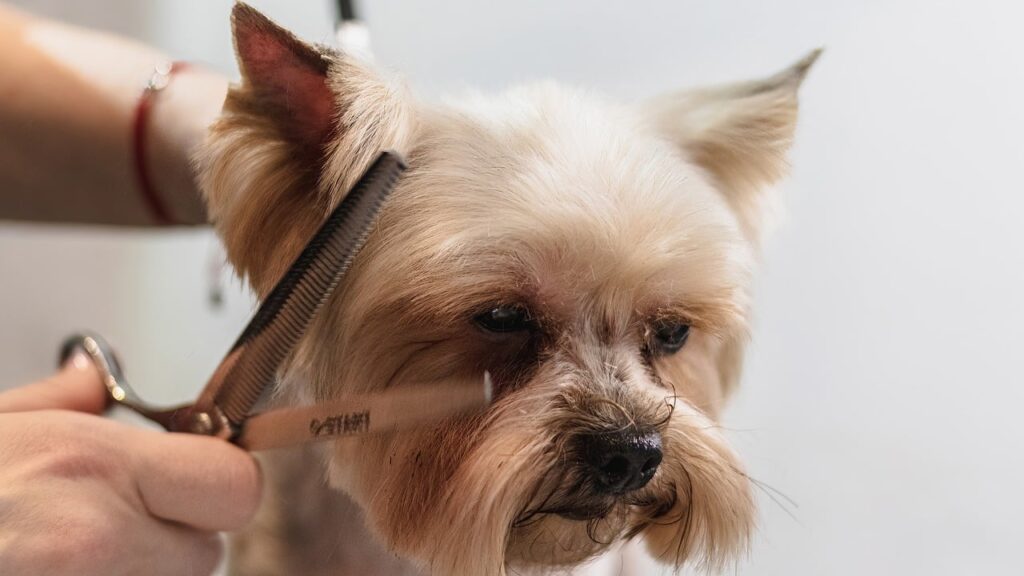

What are some common Dogs groom mistakes to avoid?
For the health and wellbeing of your pet, proper dog grooming is crucial. A positive experience with grooming is ensured by avoiding common mistakes.
The following are some traps to avoid:-
1. Not Brushing Your Dog’s Coat Before Bathing:-
o It is important to brush your dog’s coat before giving them a bath. It disperses natural oils, gets rid of surface dirt, and keeps hair from tangling.
o Regular brushing also enables you to look for lumps, bumps, or sores that might require care.
o To help your puppy become used to the brushing routine, start early. Give them goodies as a reward for being patient while you groom them.
o Different coat types need different amounts of maintenance (short, smooth coats in breeds like Boxers and Staffordshire Terriers, for example).
2. Not Training Your Dog:-
o It’s Important to train your dog for bath times. Teach them to remain composed when brushing, bathing, and trimming their nails.
o Patience and encouraging feedback are very beneficial. Make grooming enjoyable for the two of you.
3. Cleaning Your Dog’s Inner Ears:-
o Steer clear of cleaning your dog’s ears from the inside out. Because of the sensitivity of their ear canals, too much moisture can cause infections.
o Use a moist cloth or specialized ear wipes to clean just the areas of the ears that are visible.
4. Not Giving Your Dog a Good Rinse:-
o After bathing your dog, make sure to thoroughly rinse out the shampoo and conditioner. Itching or skin irritation may result from residue.
o Pay particular attention to regions such as the belly, tail, and armpits.
5. Using the Wrong dogs Groom Tools:-
o Select the appropriate tools based on the type of coat on your dog. They should have clippers, combs, and brushes that fit their needs.
o High-quality goods guarantee safe and efficient grooming.
It’s important to keep in mind that grooming fosters relationships and that your dog will look and feel their best with the right care.
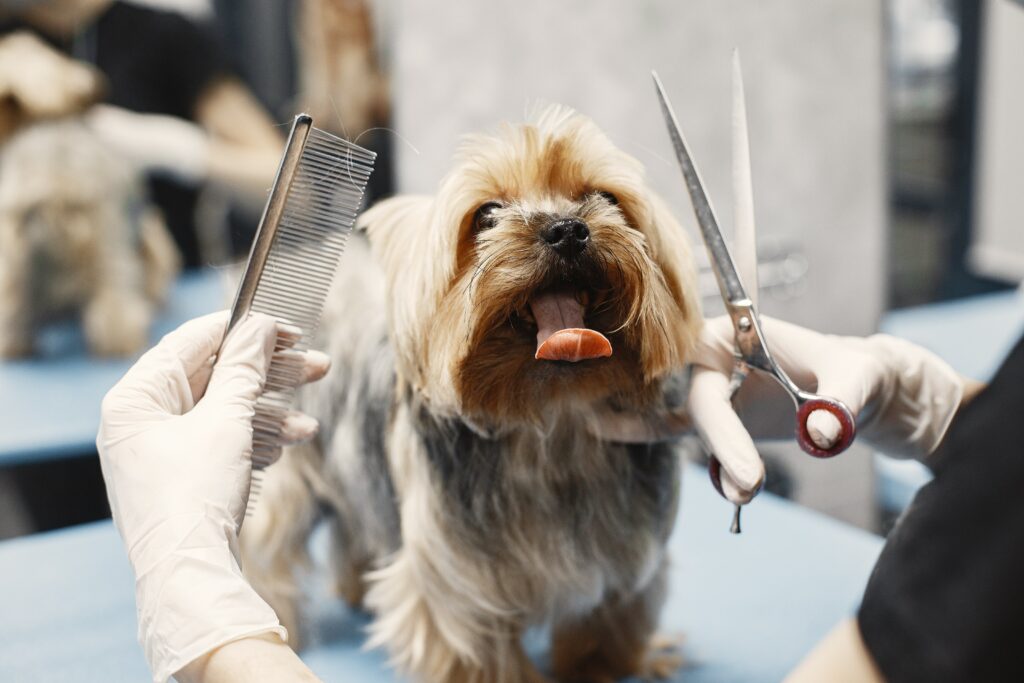

How can I train my dog to enjoy grooming?
To teach your dog to look forward to being groomed, do the following:-
1. Start Them Young:-
o When your dog is still a puppy, start grooming him. As with any other training, getting started early is essential.
o Puppies discover early on that grooming is enjoyable. Although fears may have developed in older dogs, working with them is still possible.
o The method for keeping a dog calm while being groomed is the same, regardless of age.
2. Give Them Time to Adjust:-
o Dogs identify grooming with a particular space (such as a bathroom or grooming tub).
o Admit your dog to this space gradually. Spend some time there without grooming them right away.
o They are less likely to fear the process if they feel more at ease in that setting.
3. Groom Your Dog When They’re Weary:-
o Select an opportunity when your dog is both content and weary. When they’re nervous or hyperactive, don’t groom them.
o A composed dog is more likely to find the activity enjoyable.
4. Get Ready for Tasks and Know What You’re Doing:-
o Maintain organization and self-assurance when grooming. Dogs are able to sense your mood and attitude.
o Give constructive criticism. Instead of just giving your dog treats when they behave well, praise them.
5. Help the Dog Adjust to the Tools:-
o Gradually introduce grooming tools to the dog. Allow your dog to explore and sniff them.
o Connect useful tools to satisfying memories. Give them treats and show them the brush, for instance.
6. Equipment to Simplify Grooming:-
o Use the right tools based on the type of coat on your dog:
o Pick the appropriate brush depending on the length of your hair.
Nail clippers:-
o Teach your dog to accept nail cuts gradually.
o Apply mild shampoo and conditioner that is appropriate for canines.
Praise and treats:-
o When grooming, give praise for good behavior.
Recall that persistence and encouraging feedback are very beneficial. Your dog will soon associate loving care and grooming with it!
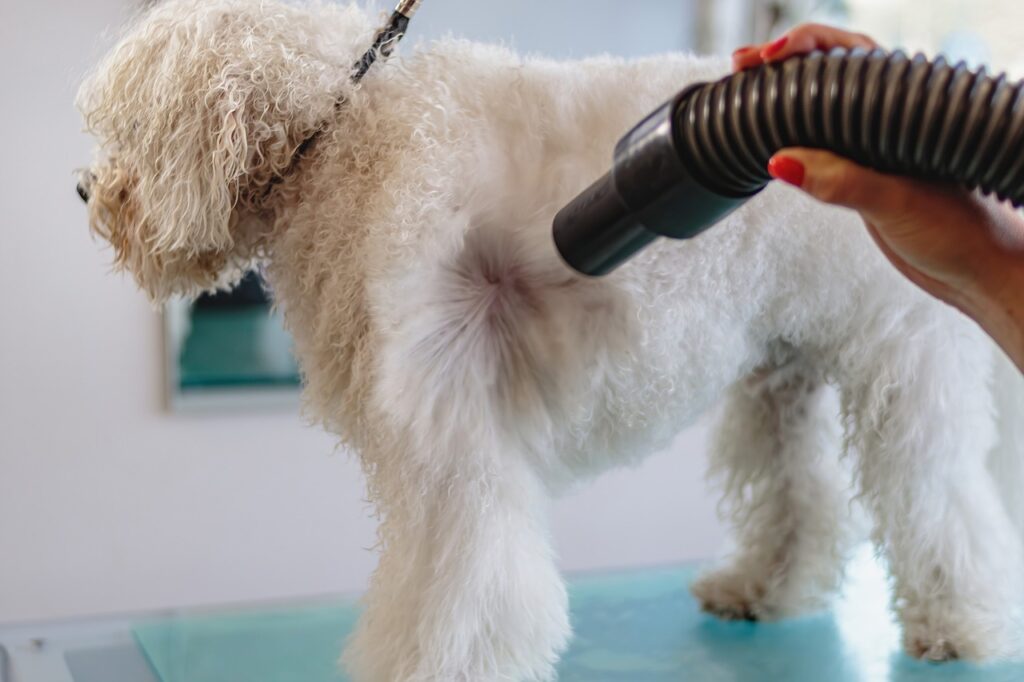

What are some common groom tools for dogs?
For the health and wellbeing of your pet, proper dog grooming is crucial.
The following are some typical grooming tools supplies you ought to have:-
1. Clippers:- For cutting or clipping your dog’s hair, clippers are essential. They help keep coat length intact and come in a variety of varieties.
2. Combination Brush:- This brush has two sides one for daily brushing and the other for removing dead hair with a slicker brush.
o Perfect for maintaining a healthy, tangle-free coat on your dog.
3. Double-Sided Comb:- A comb made of stainless steel; one end has large teeth, while the other has finer teeth.
o Applied for flea control, undercoat removal, and general grooming.
4. Flea Combs:- Fine-toothed combs intended to remove undercoats and capture fleas.
5. Grooming Glove:- Has rubber nubs to prevent shedding and shine.
o Particularly helpful for dogs with a single coat.
6. Grooming Rake:- A wide-toothed, comb-like tool for removing mats and tangles and pulling out undercoats.
o Helpful for dogs that have two coats.
7. Grooming Table:- A table that is waist high so that dogs can be easily groomed.
8. Dog Hair Dryer:- Used to pat dry and fluff up your dog’s hair following a wash.
o A range of canister-style and handheld dryers are available.
9. Mat Splitter:- A blade-equipped instrument for slicing through mats.
10. Toenail clippers:- A must for cutting your dog’s nails.
o Comes in power, guillotine, scissors, and pliers varieties.
11. Rubber Bristle Brush:- A long-bristled brush for polishing and blending coats.
12. Nonskid Rubber Mat:- Added to the bottom of a bathtub or sink to stop your dog from slipping when washing themselves.
13. Pin Brush:- Round-tipped bristles prevent abrasions on the skin.
o Often applied to dogs with long hair.
14. Pumice Stone:- A porous stone that is brushed over the coat to remove undercoats and dead hair while shining and smoothing the outer layer.
Always select the appropriate tools for your dog’s coat type and specific needs. Cheers to your grooming!
